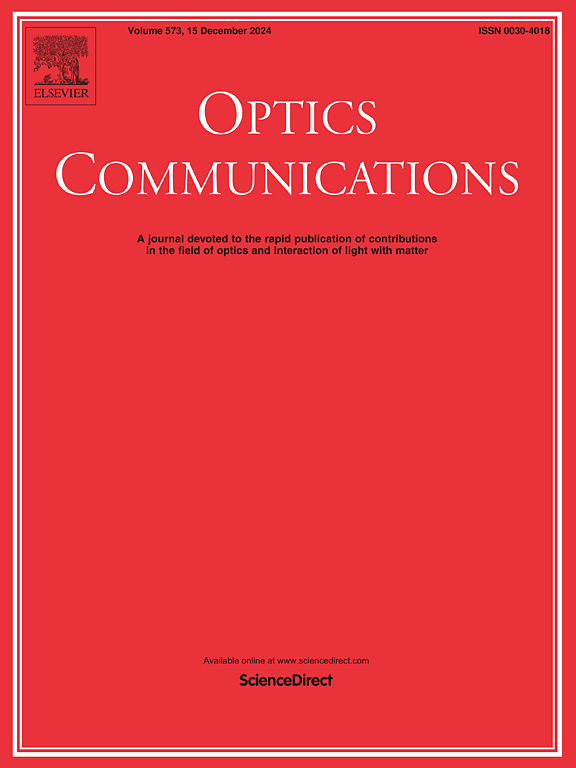Proposing an ultra-low loss sodium-based triangular hybrid plasmonic waveguide
IF 2.2
3区 物理与天体物理
Q2 OPTICS
引用次数: 0
Abstract
Highly confined and long-range deep subwavelength optical propagation is crucial for photonic integration. Surface plasmon polaritons provide a scientific method for high-density photonic integration and low-loss optical field transmission. In this research, we introduce a triangular hybrid plasmonic waveguide in which a triangular nanowire is separated by a layer of from a () substrate and fixed with columns of . The properties of the propagation modes have been analyzed using the finite element method at the wavelength. The results show that we have normalized mode area = , effective index = , propagation length = , and figure of merit = simultaneously. Because of the field concentration at the tip of the triangle, a lower loss, higher confinement, and longer propagation length have been attained. In addition, the fabricating method of the proposed waveguide has been proposed and discussed. These findings of the triangular hybrid plasmonic waveguides make them widely used in many fields, including telecommunications, sensors, lasers, and optical technologies.
求助全文
约1分钟内获得全文
求助全文
来源期刊

Optics Communications
物理-光学
CiteScore
5.10
自引率
8.30%
发文量
681
审稿时长
38 days
期刊介绍:
Optics Communications invites original and timely contributions containing new results in various fields of optics and photonics. The journal considers theoretical and experimental research in areas ranging from the fundamental properties of light to technological applications. Topics covered include classical and quantum optics, optical physics and light-matter interactions, lasers, imaging, guided-wave optics and optical information processing. Manuscripts should offer clear evidence of novelty and significance. Papers concentrating on mathematical and computational issues, with limited connection to optics, are not suitable for publication in the Journal. Similarly, small technical advances, or papers concerned only with engineering applications or issues of materials science fall outside the journal scope.
 求助内容:
求助内容: 应助结果提醒方式:
应助结果提醒方式:


